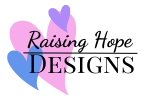
From the moment of their birth, children possess an innate ability to express their deepest emotions. They cry out when their bellies ache with hunger, they scream when they are in pain, and their innocent smiles radiate pure joy when they are happy. As they grow, these initial, raw emotional signals begin to transform, gradually grow into the use of language skills. But what if your child remains nonverbal? What if their means of communication are confined to those raw emotional signals? This is the reality that we face when no one is able to tell us if Hope will be able to express these emotions through speech and understanding.
Hope has recently started independently recognising simple colours, farm animals, and the character Bluey. It has taken years of patient teaching and ingraining these concepts into her memory. The sense of accomplishment and joy that fills us when witnessing these things is immeasurable.
Yet, it is in the moments when we ask questions beyond what we can teach that our hearts break.
“How was your day, Hope?” we inquire, longing to connect with her on a deeper level.
“How did you sleep?” we gently ask, yearning for a glimpse into the mysteries of her dreams.
“Where are you sore?” we desperately seek to ease her discomfort, trying hopelessly to understand her pain.
“Why are you crying?” we implore, hoping for a window into her emotions.
“What did you do today?” we ask, aching for the details of her world.
But with each of these questions, we are met with a haunting look of confusion—a gaze that feels like an impenetrable barrier between our hearts and hers. It is a blank expression, leaving us uncertain as to whether she truly understand the words we so desperately trying to ask
However, I hear you say, “I’ve asked her before, and she signs ‘good.’” And indeed, you are correct. But have a think deeper into that interaction.
“How are you today, Hope?” you ask smiling, waiting for a response.
Hope remains silent.
“Are you good?” we interupt, hastily signing the gesture for “good.”
Hope watches our hands, imitating the sign for “good.”
Yet, this isn’t her saying she is good, This is not her voice. Instead, it is her parents’ voice, their wishes for her to be “good,” and their hands signing for Hope to copy. This is not a genuine reflection of Hope’s feelings, more a teaching of what a social interaction should look like.
We won’t know whether this emotion identification would ever grow and develop but until then, we will show Hope what the social etiquette is and pray once day she will be able to express her true feelings.
Until then we are celebrating the little wins and being the best possible role models we can possibly be.

This Post Has 0 Comments